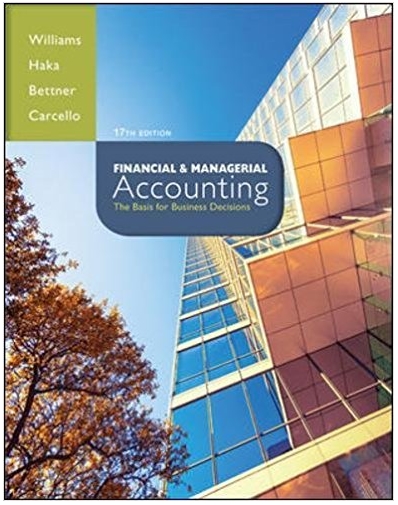8) Walter Co, and Sandburg Industries report the following information at December 31: Accounts Receivable Cash Finished Goods Inventory Work in Process Inventory Merchandise Inventory Prepaid Expenses Raw Materials Inventory WALTER SANDBURG $41,000 $68,000 6,000 7,000 25,000 40,000 48,000 1,000 2,000 21,000 Required: (a) Which company is a manufacturer? Explain. (b) Prepare the current assets section of the balance sheet for the manufacturer. 9) Information for Maxim Manufacturing is presented below. Compute both the cost of goods manufactured and the cost of goods sold for Maxim Manufacturing. Beginning raw materials inventor Beginning work in process inventory Direct labor Beginning finished goods inventory Total factory overhead Raw materials purchased Ending raw materials inventory Ending work in process inventory Ending finished goods inventory $36,800 21,200 81,000 64,000 126,000 21,500 40,000 20,000 46,000 4) Using the information below, compute the days' sales in raw materials inventory: Raw materials used Beginning raw materials inventory Ending raw materials inventory $ 85,500 8,000 9,000 A) 11.02. B) 36.3. C) 10.06. D) 9.94 E) 38.4. 5) Match each of the following terms with the appropriate definition. (1) Direct materials (2) Indirect costs (3) Product costs (4) Prime costs (5) Fixed costs (6) Direct labor (7) Period costs (8) Conversion costs (9) Factory overhead (10) Variable costs (a) Costs that are expensed to the income statement in the period incurred.. (b) Costs that change in proportion to changes in volume of activity. (c) The efforts of employees who physically convert materials to finished products. (d) Manufacturing costs that cannot be separately or readily traced to finished goods. (e) Costs necessary to create a product.. (f) Costs incurred in the process of converting raw materials to finished products, include direct labor and factory overhead. (8) Tangible components of a finished product separately and readily traced through the manufacturing process. (h) Costs directly associated with the manufacture of finished products; include direct materials and direct labor. (i) Costs that do not change in total with changes in the volume of activity. 6) Costs that cannot be easily and cost-beneficially traced to a single cost object. Chapter 18 1) Use the cost information below for Sundar Company to determine the cost of goods manufactured during the current year: Direct materials used Direct labor used Factory overhead Beginning work in process inventory Ending work in process inventory $ 19,000 24,500 55,100 10,700 11,300 A) $98,600. B) $43,500. C) $98,000. D) $42,900. E) $79,000. 2) Total manufacturing costs incurred during the year do not include: A) Direct materials used. B) Factory supplies used. C) Work in Process inventory, beginning balance. D) Direct labor. E) Depreciation of factory machinery. 3) Use the following data to compute total factory overhead costs for the month: Sales commissions Direct labor Indirect materials Factory manager salaries Factory supplies Indirect labor Depreciation-office equipment Direct materials Corptrate office salaries Depreciation--factory equipment $ 10,800 39,600 15,200 7,200 9,000 6,300 5,000 40,500 42,500 7,500 A) $141,100. B) $125,300. C) $45,200 D) $84,800. E) $58,300










